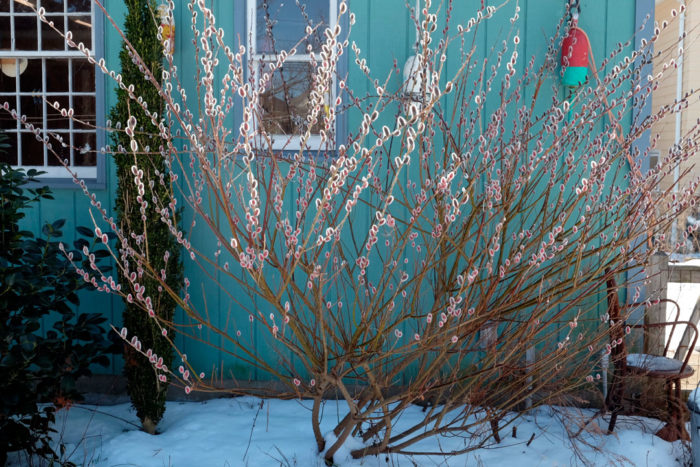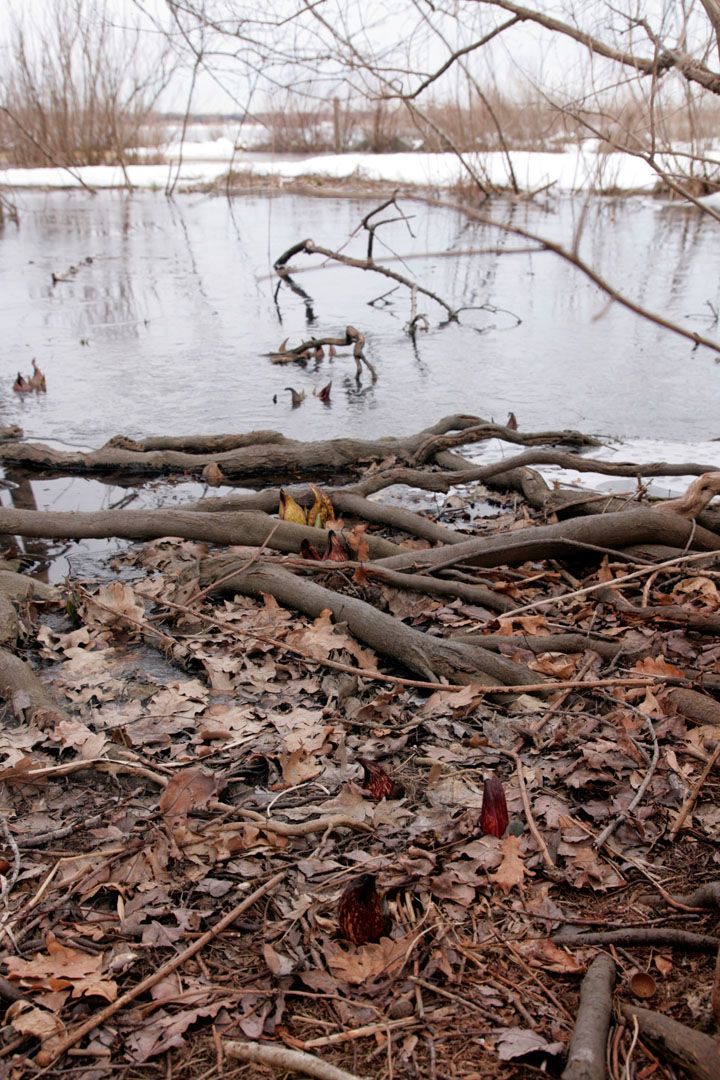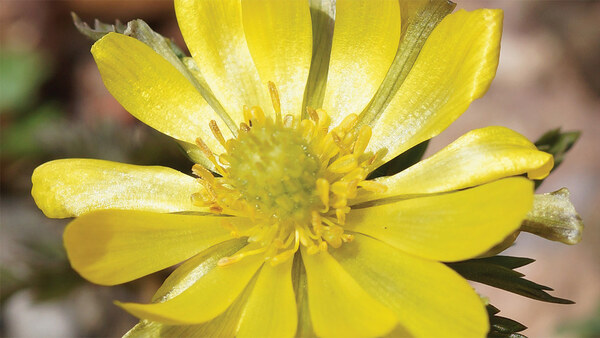
It’s difficult to defend a month that has most Northeastern gardeners contemplating a permanent move south. After the injury of February, March is an insult. Even the spring equinox can’t be trusted when it’s followed by a snowstorm. Nonetheless, if we stay put, squint, and adjust our garden plans, March may be, ever so slightly, redeemable.
I don’t expect anyone to cultivate skunk cabbage (Symplocarpus foetidus, Zones 4–7), which is best appreciated in the wild. Take a walk in the woods and keep eyes peeled for pointy hooded spathes the color of spoiled meat growing out of stream banks, bogs, and vernal pools. This botanical marvel actually generates heat to bust through ice and snow to offer shelter and sustenance to early pollinators, and its roots contract like a muscle to pull it ever deeper into the ground.

Look up in the same areas to spot native pussy willows (Salix discolor, Zones 4–8). They’ll be shedding their bud scales to reveal our childhood favorite gray kitten-fur flowers that hug the stems and eventually open to reveal bright yellow pollen on male plants and greenish carpels on the females. Pussy willows are dioecious pollinator magnets.

Native pussy willows offer ecological benefits by hosting native butterflies and pollinators, but if your garden is on the small side, you may consider planting an exotic variety selected for showiness and border-friendly scale. ‘Mt. Aso’ pink pussy willow (Salix gracilistyla ‘Mt. Aso’, Zones 4–8) opens much earlier than the native to reveal large pink glowplugs that shine through February and March before offering pollen, and grows only to about 6 feet high and wide. Pussy willows thrive in moist soil, full sun to partial shade, and may be coppiced after bloom to prevent legginess.

Winter honeysuckle (Lonicera fragrantissima, Zones 4–8), aka sweet breath of spring, grows a thicket of arching branches to a similar size (6 to 10 feet high and wide). Early spring flowers are tiny but pack a powerful, lemony sweet punch. Unlike its cousin Japanese honeysuckle, winter honeysuckle is not listed as invasive in the Northeast, perhaps because it blooms earlier than most of our pollinators are out. It colonizes by layering, and any seed production may be controlled by coppicing after bloom. That’s not a bad idea anyway to keep its gangliness in check.
Spring blooming witch hazels are a must have for all but the snowbirds who followed through on heading south. This year my ‘Jelena’ witch hazel (Hamamelis × intermedia ‘Jelena’, Zones 5–8) started blooming during a January thaw and held its curled petals through every February and March snowstorm. Beat that, frangipani!
Finally, no March garden is complete without a patch of hellebores (Helleborus spp. and cvs., Zones 4–9) adorning the shade. Cultivars are being bred for the hort-couture of elegant ruffles, speckles, pinstripes, exquisite colors, and a chin-up display. That said, my favorite is the shoe-gazing black sheep of the family. Stinking hellebore (Helleborus foetidus, Zones 5–9)—so called for its foul-smelling, finely cut evergreen foliage—displays bouquets of red-edged green bells on 1- to 2-foot stems from March into May. When it blooms, it is finally safe to say that winter is over.
Kristin Green is author of Plantiful: Start Small, Grow Big with 150 Plants that Spread, Self-sow, and Overwinter, and gardens in Bristol, Rhode Island.


















Comments
Log in or create an account to post a comment.
Sign up Log in